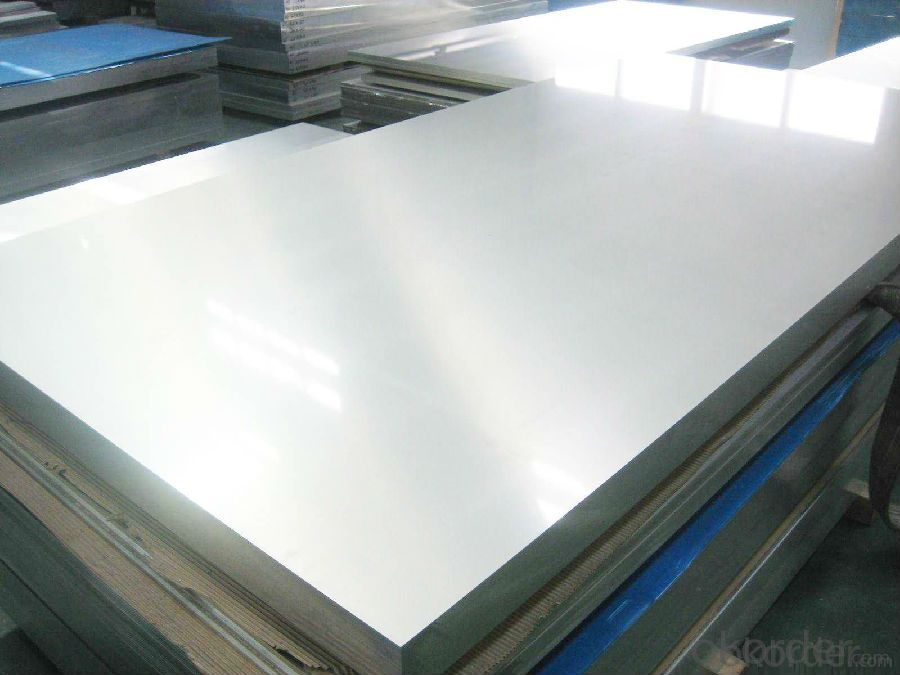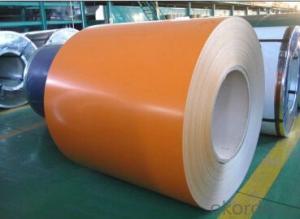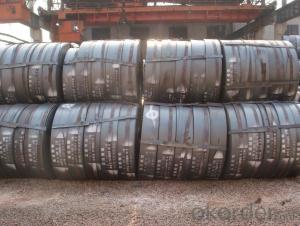Stainless Steel Sheet ASTM Standard 200,300,400 Series
- Loading Port:
- China main port
- Payment Terms:
- TT or LC
- Min Order Qty:
- 50 m.t.
- Supply Capability:
- 1000 m.t./month
OKorder Service Pledge
OKorder Financial Service
You Might Also Like
1.Structure of Stainless Steel Sheet Description
The surface brightness and flatness of no2B is better than no2D. then through a special
surface treatment to improve its mechanical properties,No2B could nearly satisfy comprehensive uses.
2.Main Features of the Stainless Steel Sheet
• Decoration
• Daily Necessities
•,Medical Treatment
• Daily Necessities
3. Stainless Steel Sheet Images


4. Stainless Steel Sheet Specification
Grade: | 200,300,400 Series Stainless Steel Sheet | Standard: | JIS,AISI,ASTM,GB,DIN,EN | Length: | 0-6000mm ,Or According to clients' requirement
|
Thickness: | 0.3mm-100mm | Width: | 10mm-2500mm | Place of Origin: | Shanxi China (Mainland) |
Brand Name: | CNBM | Model Number: | 200,300,400 Series,200,300,400 Series Stainless Steel Sheet
| Type: | Plate |
Application: | Decoration, Machinerhty,Lig Industry,Heavy Industry,Daily Necessities,Decoration,Kitchen,Building,Medical Treatment,Transport,Chemical
| Certification: | SGS,ISO,SGS | Technique: | Cold/hot rolled |
Surface Finish: | 2B,NO.1,NO.3,NO.4,HL,BA,8K,mirror,polished etc. | Exported Area: | USA,Europe,Asia,Middle East,Africa,South America | Packaging: | As Customers Requirement |
5.FAQ of Stainless Steel Sheet
①Who are you?
We are the manufacturer! We produce stainless steel products
with high quality & very competitive price!Please feel free to
contact us for more information!
②How long can we receive the product after purchase?
In the purchase of product within three working days, We will arrange the factory delivery as soon as possible. The pecific time of receiving is related to the state and position of customers.Commonly 7 to 10 working days can be served.
③How about your company?
A world class manufacturer & supplier of castings forging in Stainless Steel Sheet,is one of the large-scale professional investment casting production bases in China,consisting of both casting foundry forging and machining factory. Annually more than 8000 tons Precision casting and forging parts are exported to markets in Europe,America and Japan. OEM casting and forging service available according to customer’s requirements.
- Q: Can steel strips be painted or powder coated?
- Yes, steel strips can be painted or powder coated.
- Q: What are the main factors affecting the thermal conductivity of steel strips?
- The main factors affecting the thermal conductivity of steel strips are the chemical composition of the steel, the presence of impurities or alloying elements, the crystal structure and grain orientation of the steel, and the temperature at which the steel is being measured.
- Q: Are steel strips susceptible to rust or discoloration?
- Yes, steel strips are susceptible to rust or discoloration if they are exposed to moisture or corrosive elements.
- Q: Can steel strips be used in the production of conveyor belts or chains?
- Yes, steel strips can be used in the production of conveyor belts or chains. They are commonly used as reinforcement or support elements due to their strength and durability. Steel strips enhance the overall performance and longevity of conveyor belts or chains, making them suitable for heavy-duty applications and industries.
- Q: What are the factors that affect the wear resistance of steel strips?
- The factors that affect the wear resistance of steel strips include the composition of the steel, the hardness of the steel, the presence of impurities or defects, the surface finish of the strips, the environmental conditions in which the strips are used, and the level of maintenance and care provided to the strips.
- Q: What are the cleaning methods for steel strips?
- Steel strips can be cleaned using various methods. One method is mechanical cleaning, which entails using abrasives or brushes to eliminate dirt, rust, and other impurities from the surface. This technique is effective for removing loose particles and can be performed manually or with automated equipment. Chemical cleaning is another commonly employed method for cleaning steel strips. It involves using solvents, acids, or alkaline solutions to dissolve or loosen dirt and impurities from the surface. The choice of chemical depends on the type and degree of contamination on the strips. An effective method for cleaning steel strips is ultrasonic cleaning. This method utilizes high-frequency sound waves to generate microscopic bubbles in a cleaning solution. These bubbles collapse upon contact with the steel strips, eliminating dirt and impurities from the surface. Ultrasonic cleaning is particularly useful for cleaning intricate parts of the strips. Electrolytic cleaning is another option for steel strip cleaning. It involves immersing the strips in an electrolytic solution and passing an electric current through them. The electric current triggers a chemical reaction that removes dirt and impurities from the surface. Steam cleaning and pressure washing are also potential methods for cleaning steel strips, depending on the specific requirements and condition of the strips. It is crucial to select the appropriate cleaning method based on the type and extent of contamination present on the steel strips, as well as any specific requirements or limitations of the cleaning process.
- Q: What are the different packaging methods for steel strips?
- There are several different packaging methods for steel strips, including coiling, bundling, spooling, and wrapping. Coiling involves winding the steel strip into a tight coil, which is then secured with bands or straps. Bundling involves stacking multiple steel strips together and securing them with bands or straps. Spooling is a method where the steel strip is wound onto a large spool, similar to how thread is wound onto a bobbin. Finally, wrapping involves individually wrapping each steel strip with a protective material, such as paper or plastic, to prevent damage during transportation or storage.
- Q: How are steel strips used in the manufacturing of electrical connectors?
- Steel strips are commonly used in the manufacturing of electrical connectors as they provide structural support and durability. They are often used as the base material for connector bodies or as reinforcement in critical areas. Additionally, steel strips can be shaped and stamped to create specific connector designs, ensuring secure connections and long-lasting performance.
- Q: Can steel strips be used in food processing or pharmaceutical industries?
- No, steel strips are not typically used in food processing or pharmaceutical industries due to the risk of contamination and the need for non-reactive materials.
- Q: How are steel strips processed for surface bending?
- Various methods are employed to process steel strips for surface bending. The initial step in the process involves selecting the appropriate steel grade and thickness for the desired application. Once the steel strips have been chosen, they undergo cleaning and preparation before bending. Roll forming machines are commonly utilized to bend the surface of steel strips. These machines consist of a series of rollers that gradually shape the strip into the desired form. The strip is fed through the machine, and each roller applies a small amount of force, gradually bending the strip. This process enables precise and consistent bending. Another approach to surface bending is press braking. This technique involves the use of a hydraulic or mechanical press to bend the strip. The strip is positioned between a punch and a die, and pressure is applied, causing the strip to bend. Press braking is suitable for both small and large bends, and it allows for the formation of more intricate shapes. In some instances, heat is applied to aid in the bending process, known as hot bending. This method is typically used for thicker steel strips. The strip is heated to a specific temperature and then shaped into the desired form. The heat softens the steel, making it more malleable and easier to bend. Following the surface bending process, the steel strips may undergo additional treatments such as annealing or tempering to enhance their strength and durability. These treatments help to eliminate internal stresses caused by bending and improve the overall performance of the steel. In conclusion, steel strips can be processed for surface bending using various methods, including roll forming, press braking, and hot bending. The selection of the technique depends on factors such as the desired shape, strip thickness, and specific application requirements.
Send your message to us
Stainless Steel Sheet ASTM Standard 200,300,400 Series
- Loading Port:
- China main port
- Payment Terms:
- TT or LC
- Min Order Qty:
- 50 m.t.
- Supply Capability:
- 1000 m.t./month
OKorder Service Pledge
OKorder Financial Service
Similar products
Hot products
Hot Searches
Related keywords




























